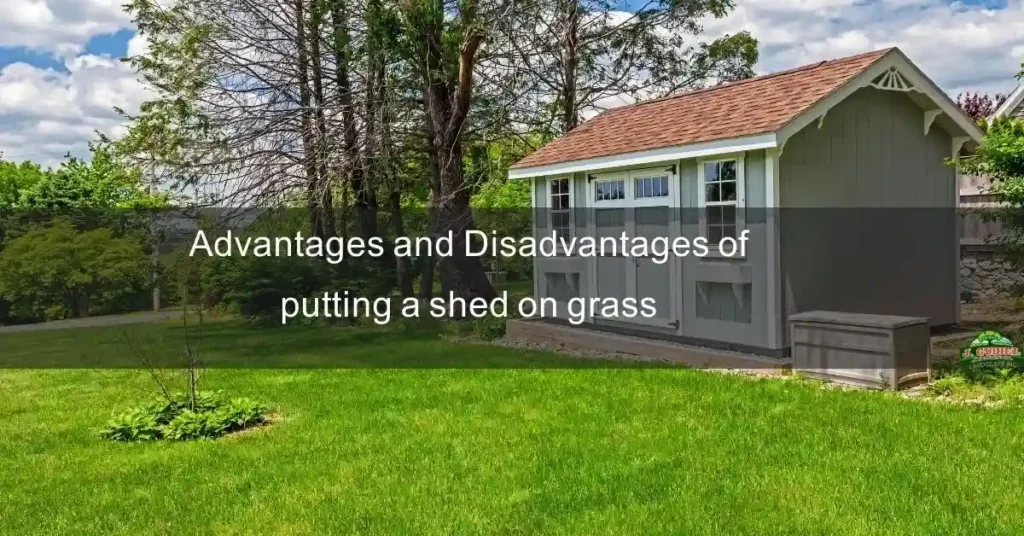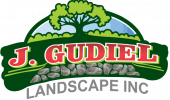When adding extra storage or workspace to your property, a shed is often the solution of choice. However, where it is placed can significantly impact its functionality and longevity. One standard option is to install the shed directly on grass, but this choice requires careful consideration of various factors. In this guide, we will delve into the dos and don’ts of placing a shed on grass, exploring the advantages and disadvantages associated with this decision. By understanding these factors, you can make an informed choice that best suits your needs and ensures the longevity of your shed.
Can You Put a Shed on Grass
You can put a shed on grass. However, there are some essential factors to consider before doing so.
Firstly, you’ll need to ensure the ground is level and stable to provide a sturdy foundation for the shed. This could involve leveling the area and adding gravel or concrete pads to support the structure.
Additionally, consider the drainage of the area. Grass can retain moisture, which may lead to issues with dampness and mold if not properly managed. Ensuring water can flow away properly around the shed can help prevent these problems.
Furthermore, remember that placing a shed directly on grass may cause the grass underneath to die due to lack of sunlight and airflow. You may need to periodically move the shed to allow the grass to recover or consider alternative landscaping solutions.
Overall, while it is possible to put a shed on grass, it’s essential to plan carefully and consider these factors to ensure the longevity and stability of the structure.
Things to avoid when placing a shed on a grass.

Uneven Ground
Avoid placing the shed on uneven or sloping ground, leading to instability and structural issues over time. Level the ground as much as possible before installing the shed.
Poor Drainage
Avoid areas with poor drainage, as excessive moisture buildup can cause damage to the shed’s foundation and structure. Ensure proper drainage around the shed to prevent water from pooling underneath.
Direct Contact with Soil
Avoid placing the shed directly on bare soil, as this can lead to moisture absorption and potential rotting of the wood. Use a suitable foundation, such as concrete blocks, gravel, or a raised wooden platform, to elevate the shed and prevent direct contact with the ground.
Lack of Ventilation
Avoid blocking ventilation underneath the shed, as this can trap moisture and lead to issues like rot and mold. Leave a gap between the bottom of the shed and the ground to allow for adequate airflow.
Neglecting Grass Health
Avoid neglecting the health of the grass underneath the shed. Consider periodically moving the shed to allow the grass to recover or implement alternative landscaping solutions to prevent long-term damage.
Local Building Codes
Check with your local building authority to ensure compliance with any regulations or permits required for placing a shed on your property. Adhering to local codes can prevent legal issues and ensure the safety and integrity of your structure.
Sunlight Exposure
Consider the orientation of the shed concerning sunlight exposure. Placing the shed in an area with adequate sunlight can help prevent moisture buildup and promote the structure’s longevity.
Accessibility
Ensure the shed is easily accessible from your home and other areas of your property. This includes considering pathways, driveways, and potential obstacles that may hinder access to the shed.
Utility Connections
If your shed will require utility connections such as electricity or water, plan the placement accordingly to ensure easy access to these utilities. Avoid placing the shed too far from existing utility lines to minimize installation costs and logistical challenges.
Security
Consider the security of the shed when placing it on grass. Choose a location visible from your home and well-lit to deter theft or vandalism. Additionally, consider installing security features such as motion sensor lights or locks to protect your belongings.
Advantages and Disadvantages of putting a shed on grass

Here are the advantages and disadvantages of putting a shed on grass
Advantages
Here are the advantages of putting a shed on a grass
Natural Foundation
Grass serves as a naturally forgiving foundation for a shed. Its porous surface aids drainage, reducing the risk of standing water around the shed. This natural drainage can minimize the need for extensive ground preparation, saving time and resources during installation.
Cost-Effectiveness
Placing a shed on grass is more cost-effective than alternatives like concrete or gravel foundations. The lower material and labor costs make it an attractive choice for budget-conscious individuals or those seeking a more economical solution for their outdoor storage needs.
Ease of Installation
Building a shed on grass is generally more straightforward and quicker than preparing a more complex foundation. With minimal ground preparation required, homeowners can take on the installation as a DIY project, saving additional expenses on professional labor.
Flexibility
One significant advantage of placing a shed on grass is its flexibility in terms of relocation. Unlike sheds anchored to concrete pads, which are more permanent fixtures, sheds on grass can be easily moved to a different location if needed. This flexibility allows homeowners to reorganize their outdoor space or adapt to changing needs over time.
Natural Aesthetic
A shed placed on grass seamlessly blends into the surrounding landscape, maintaining the natural beauty of the backyard environment. This harmonious integration enhances the overall aesthetics of the outdoor space, creating a visually pleasing and cohesive look.
Eco-Friendly Option
Opting to place a shed on grass is an environmentally friendly choice. Grass helps promote rainwater absorption and soil health, contributing to overall environmental sustainability. By utilizing the natural properties of grass, homeowners can minimize their ecological footprint while still meeting their storage needs.
Versatility
Grass can accommodate various types and sizes of sheds, from small storage units to more extensive workshops or hobby spaces. This versatility allows homeowners to choose a shed that best suits their specific requirements and preferences without being limited by the foundation material.
Disadvantages
Here are the disadvantages of putting shed on a grass
Moisture Issues
Placing a shed directly on grass can increase the risk of moisture problems, potentially leading to rot, mold, and mildew, especially without adequate ventilation or in consistently damp conditions.
Uneven Surface
Grass surfaces may only sometimes be perfectly level or stable, causing an uneven foundation for the shed, which may lead to structural issues or difficulty in securing the shed properly.
Pest Infestation
Grass attracts insects and pests, increasing the likelihood of infestation within the shed if proper pest control measures are not implemented.
Ground Settling
Over time, the ground underneath the shed may settle or shift, potentially causing the shed to become unlevel or unstable, affecting door and window function or even leading to structural damage.
Limited Durability
The grass may not provide as durable a foundation as concrete or gravel, potentially reducing stability and longevity, especially in harsh weather conditions.
Conclusion
While placing a shed on grass is a viable option due to its natural foundation and cost-effectiveness, addressing potential challenges is essential. Ensuring the ground is level and adding a weed barrier can enhance stability. Additionally, anchoring the shed and implementing proper drainage measures can help mitigate moisture issues and prevent structural damage over time. Regular maintenance, including mowing and pest control, is essential to ensure the shed’s longevity and the health of the surrounding grass.
FAQs:
Q1: Can I put a shed directly on grass?
A: Yes, you can. However, ensure the ground is level and consider adding a weed barrier for stability.
Q2: Should I anchor the shed on grass?
A: Anchoring is recommended to secure the shed against wind and prevent shifting. Ground anchors or straps can be used.
Q3: How do I prevent moisture issues?
A: Improve drainage with a gravel base, ensure ventilation in the shed, and maintain the area around the shed to minimize moisture buildup.

